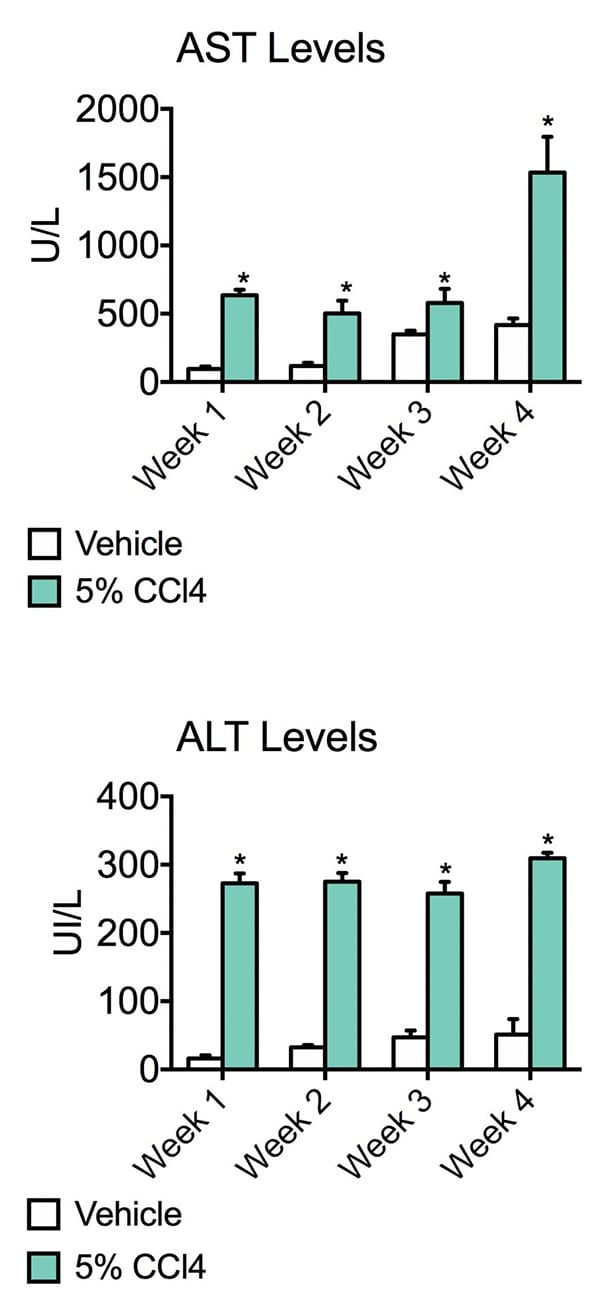Melior Discovery in vivo models of Fibrosis
in vivo Efficacy: Animal Models
Melior is a leading contract research provider of preclinical in vivo pharmacology services using rat and mouse models of Fibrosis
Fibrosis
Fibrosis in its various forms represent an area of high unmet medical need. Although any available animal model of fibrosis has some challenges regarding validity or translatability, Melior has worked with KOLs in these fields who agree that the rodent models of pulmonary fibrosis liver fibrosis which Melior uses are as good as any fibrosis models that have been described.
Fibrosis Models
Liver Fibrosis
Liver fibrosis is a wound healing response to acute or chronic injury that results in the excessive deposition of extracellular matrix proteins, i.e., scar tissue. Advanced liver fibrosis results in cirrhosis, liver failure, and portal hypertension. In mice, liver fibrosis induced by carbon tetrachloride (CCl4) resembles important properties of human liver fibrosis including: inflammation, regeneration, and fiber formation. This model is commonly used to study acute liver injury, advanced fibrosis, as well as fibrosis reversal. Additionally the CCl4 induced liver fibrosis model is highly reproducible and therefore an excellent candidate for drug screening.
AST levels and ALT levels. Aspartate transaminase (AST) and alanine transaminase (ALT) are commonly measured clinical biomarkers of liver health. Both AST and ALT levels were significantly elevated in CCl4 administered animals for the entire duration of the study, suggesting that liver damage has occurred. Data are mean ± SEM; *p<0.05 compared to vehicle control.
Pulmonary Fibrosis
Pulmonary fibrosis is characterized by alveolar epithelial cell injury and hyperplasia, inflammatory cell accumulation, fibroblast hyperplasia, deposition of extracellular matrix, and scar formation. The end result of this process is the loss of lung elasticity and loss of alveolar surface area leading to impairment of gas exchange and pulmonary function. The disease is further characterized by the presence of chronic inflammatory infiltrates, myofibroblast hyperplasia, and disordered collagen deposition.
Melior uses the most widely used and best characterized models of pulmonary fibrosis.
Lung hydroxyproline. Hydroxyproline content of lung tissue was measured by colorimetric assay. Treated animals had significantly increased lung hydroxyproline content, demonstrating that pulmonary fibrosis has formed. Data are mean ± SEM; **p<0.01 compared to vehicle control.
Get More Information on Melior’s Fibrosis models and theraTRACE® Phenotypic Screening Platform:





